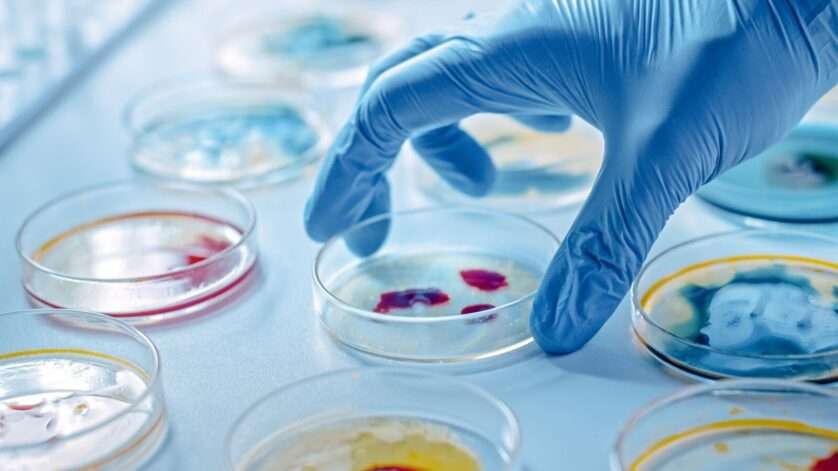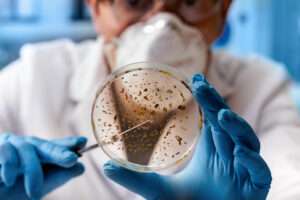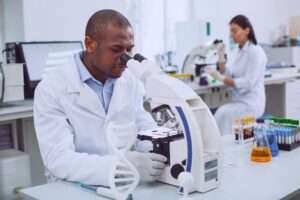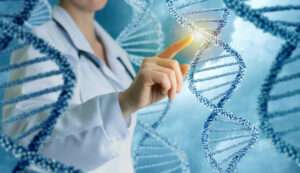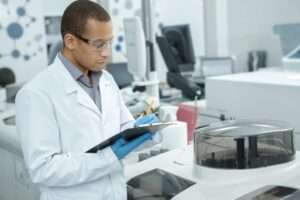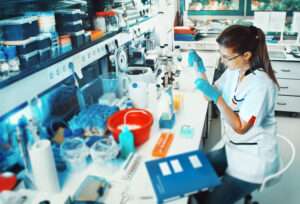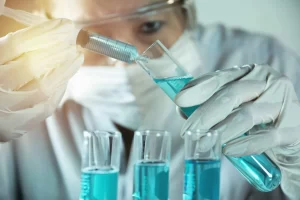Clinical Microbiologist Job Description
A clinical microbiologist’s job description involves studying bacteria and their relationship to disease. They also investigate the interaction of bacteria and antibiotics. They also isolate, grow, and culture microorganisms. Some of the services provided by a clinical microbiologist include the testing of water for bacteria, as well as environmental tests for pollution and contamination. They identify microorganisms based on their morphological and physiological characteristics. They also provide diagnostic and laboratory services to health departments and community environmental health programs.
Also Read – Biomedical Scientist Job Description
Infectious diseases
A clinical microbiologist is responsible for testing various microorganisms for the diagnosis and treatment of infectious diseases. Their duties include collecting, transporting, and analyzing samples of various biological materials. They may also work with epidemiologists, researchers, and public health officials. The duties of a clinical microbiologist may vary based on their experience and the position they hold.
Clinical microbiologists typically receive most of their training through internships and residencies. During this time, they gain valuable experience by helping practicing clinical microbiologists with the day-to-day tasks. They also learn to interact with patients and explain test results. Some positions require a master’s degree in microbiology.
In addition to working in a clinical setting, clinical microbiologists must be skilled in various laboratory techniques. This includes the knowledge of laboratory safety practices, proper labeling of samples, and proper storage. Additionally, clinical microbiologists must be problem-solving experts. They use their knowledge to identify infections and devise treatment plans for them. They are often responsible for testing foods and substances for pathogens that cause illness.
In addition to diagnosing diseases, clinical microbiologists also monitor the treatment of patients. They may also make recommendations for antibiotics and contribute to public health initiatives. For example, they may help to curb antibiotic resistance by monitoring patterns of infectious disease. Finally, they may also work closely with hospital infection control teams and estates departments to improve patient safety and health care.
Training for a career in microbiology is usually postgraduate, and typically lasts four to five years. During this time, trainees become consultants, which usually requires a membership of the Royal College of Pathologists. Once trained, they can then seek employment as consultants in universities and NHS Trusts.
Another important aspect of the clinical microbiologist’s job is epidemiology. They can conduct research in public health laboratories and study the effects of microbial infections on humans. They can also help develop medical treatments and vaccines. There are many different subspecialties within medical microbiology, and each one has its own set of responsibilities.
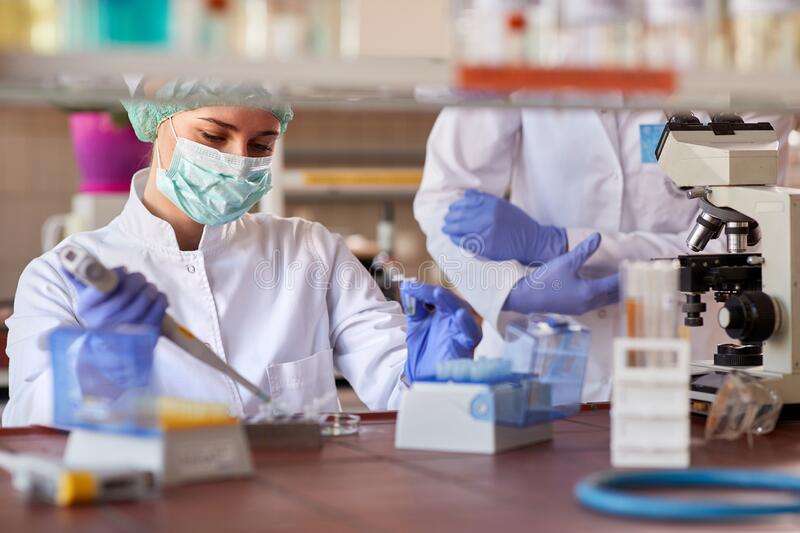
Also Read – Immunologist Job Description
Work in medical laboratories
A clinical microbiologist’s job involves performing a range of clinical laboratory tests to diagnose illness and identify the presence of infectious diseases. The job also involves conducting research into the development of better methods to protect patients from infections. Those interested in this field need a bachelor’s degree in microbiology or a related science. There are many colleges and universities that offer this degree program. Many scientists who have earned their Ph.D. in microbiology begin their careers by working in postdoctoral research positions. This gives them valuable hands-on experience and the opportunity to learn more about their chosen field.
Clinical microbiologists work with highly trained medical technologists to analyze and interpret test results. They may also advise doctors or other medical personnel on the most appropriate treatment for patients. Clinical microbiologists often collaborate with other medical professionals to develop new scientific experiments. They may also decide what material and equipment is needed to conduct new tests. In some cases, clinical microbiologists become laboratory directors and lead research labs.
Microbiologists specialize in identifying and treating various types of infections. Most medical microbiologists work in a hospital setting and focus their work on diseases caused by specific microorganisms. In hospitals, they work in wards and intensive care units, but they also work in outpatient clinics. They are often in charge of advising clinical staff on the proper treatment for patients, as well as minimizing the spread of antimicrobial resistance.
A clinical microbiologist must have an advanced degree in medical microbiology to be able to work in the public health field. If you are fascinated by microbes, this field may be right for you. The pay range is between $65,000 and $150,000 a year. A clinical microbiologist can also work in public health laboratories, where their work is aimed at improving public health.
Although the field is highly competitive, salaries are fairly high. The salary range for a clinical microbiologist varies depending on where you work. There are also some challenges associated with this field, such as distance from patient care units. Some clinical microbiologists are spread across several hospitals, making it difficult to develop relationships with key physicians. Furthermore, most medical laboratories are spread miles away from patient care areas, making it difficult to build relationships.
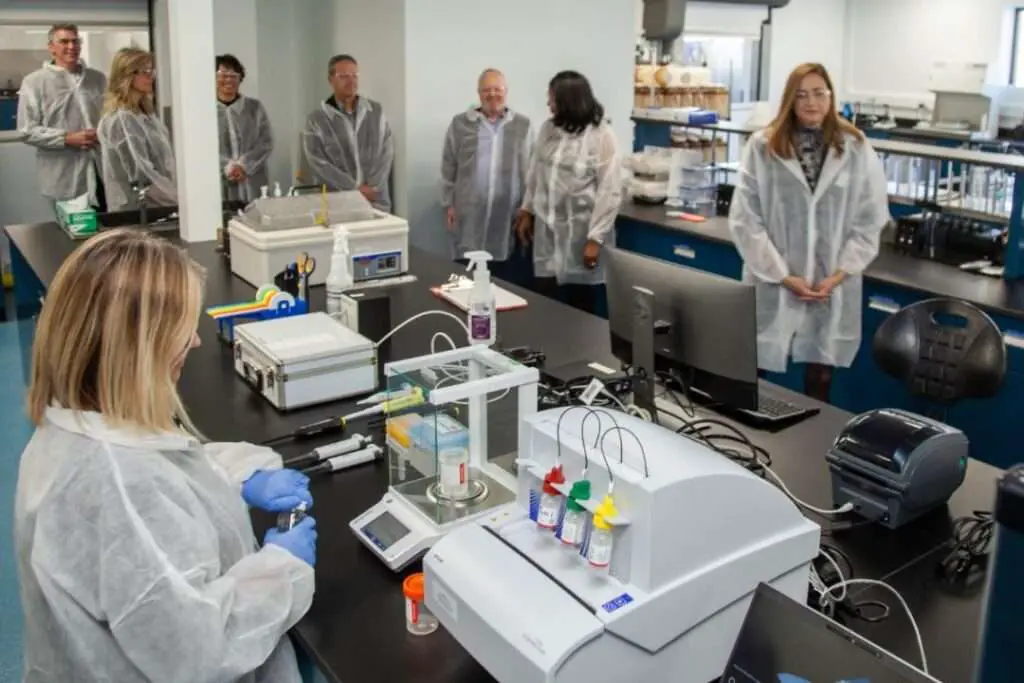
Also Read – Biotechnologist Job Description
Develop new technologies to control emerging diseases
The Emerging Pandemic Threats program of USAID supports country-level capacities to detect, respond to and contain emerging diseases. It builds laboratory-based diagnostic and surveillance capacity, and promotes early detection and outbreak response. It also provides risk-mitigation strategies. These efforts help prevent the spread of diseases and ensure human and animal health.
The development of new technologies for emerging diseases is a key component of achieving the Millennium Development Goals. In particular, progress toward combating infectious diseases is linked to progress toward the achievement of MDGs, which focus on maternal health, child health and sanitation. Another goal, MDG 8F, calls for affordable access to essential drugs and the development of new technologies. To achieve these goals, public funding must be leveraged.
As the global population continues to grow, so will the number of emerging diseases. By 2050, the world’s population is expected to reach 8 billion, with over 60% of people living in cities. In addition, the aging of the world’s population will increase their susceptibility to infectious diseases. As we age, our immune systems become less effective and our ability to fight infections decreases. Moreover, air travel increases every year, favoring the spread of new pathogens.
One way to bridge this gap is to increase public sector investment in R&D for neglected diseases. Currently, 97 percent of all research funding for neglected diseases comes from high-income countries. Nevertheless, the growing pharmaceutical industry in emerging economies is a promising market for indigenous innovation. For example, the emergence of BRICS countries has given rise to a growing pharmaceutical sector.
In order to effectively control the spread of new infectious diseases, researchers need to be able to detect and understand them as early as possible. This is especially important in areas where risk factors are converging. For example, the recent outbreaks of the Ebola virus in West Africa and the Middle East respiratory syndrome corona virus in the Middle East are examples of such emerging diseases. While the emergence of new viruses is difficult, progress in science has made it possible to study disease dynamics through mathematical models.
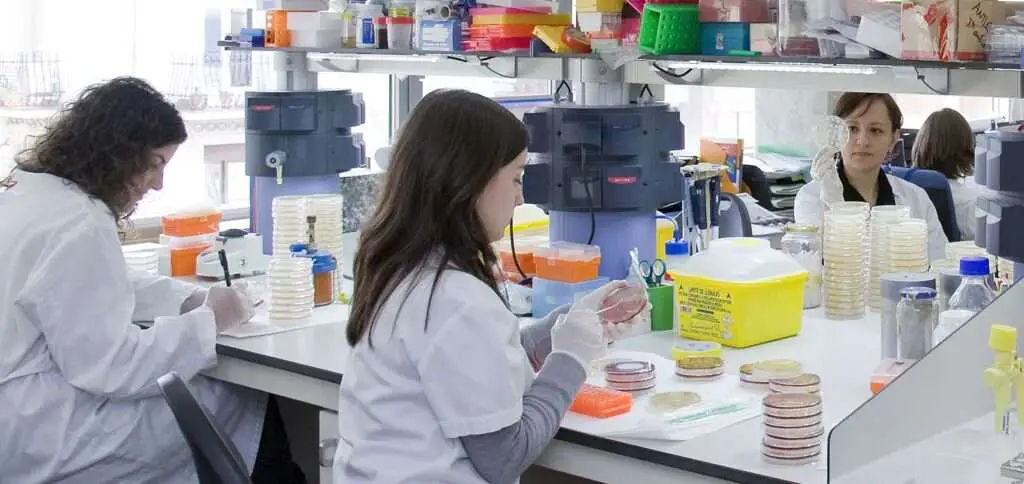
Also Read – Medical Laboratory Technician Job Description
Salary range
Salary ranges for clinical microbiologists vary, but there are some key factors that can affect the amount you can expect to make. First of all, experience and education are both significant factors that impact the salary of a clinical microbiologist. Furthermore, location matters, since salaries are higher in large metropolitan areas.
Microbiologists are professionals who study the different types of microorganisms and their interactions with each other. They can work in academia, health care, government, and private industries. Microbiologists are expected to have at least a bachelor’s degree, though a doctoral degree is preferred. Their annual salary ranges from $81,840 to $91,840.
A Clinical Microbiologist’s salary can range anywhere from $46,990 to $61,590, but the highest paid earners make more than that. This salary range varies by location and years of experience. If you’re interested in this career, check out the salaries in the United States.
To become a clinical microbiologist, you need to have a bachelor’s degree in a related field. Most microbiologists have a four-year bachelor’s degree, though some can work with a two-year associate’s degree. In addition, you can also obtain certification or get valuable experience working as an intern. A master’s degree can also increase your employment opportunities. However, a PhD is necessary for advanced research or to work in a university.
Microbiologists are usually involved in basic and applied research. Some of them work in laboratories to develop new products or enhance scientific knowledge. Others work in medical diagnostic laboratories, where they help track diseases and control health hazards. These professionals use sophisticated laboratory instruments and computer software to analyze their results. They may even be involved in the development of genetically engineered crops and vaccines.
Also Read – Pharmaceuticals and Biotechnology Job Description
Useful Links:-
Dubai Job Vacancies, Engineering Job Vacancies in Dubai, Top Dubai Jobs, Multiple Dubai Job Vacancies, Dubai Jobs, Jobs in Dubai, Dubai Job vacancies, Dubai Vacancies, Abu Dhabi Job Vacancies, Engineering Job Vacancies in Abu Dhabi, Top Abu Dhabi Jobs, Multiple Abu Dhabi Job Vacancies, Abu Dhabi Jobs, Jobs in Abu Dhabi, Abu Dhabi Job vacancies, UAE Vacancies, UAE Job Vacancies, Engineering Job Vacancies in UAE, Top UAE Jobs, Multiple UAE Job Vacancies, UAE Jobs, Jobs in UAE, UAE Job vacancies, UAE Vacancies
Click Here to find the latest Job Vacancies

